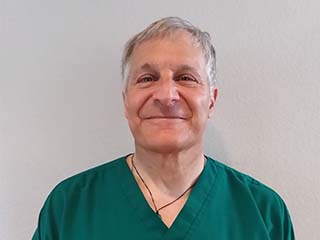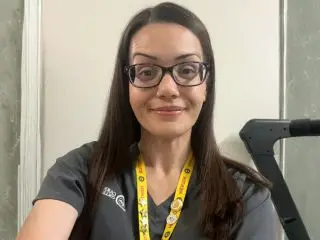 Since the start of the coronavirus pandemic, public health ad campaigns across the country have delivered smart recommendations to encourage hand washing. These have suggested things such as citizens scrub their hands for 20 seconds while belting out the chorus to Dolly Parton’s classic country song “Jolene.” Singing the simple old standard “Happy Birthday” is another common suggestion. One health department took a different approach and recommended, “Wash your hands like you just peeled a bag of green chile and need to take out your contact lenses.” Anyone who has rubbed their eyes after handling hot peppers won’t soon forget that experience—just like someone who develops a bad case of COVID19, or any other serious infection, won’t quickly forget their suffering. That’s why, in the world of health care, aseptic measures occur to reduce the risk of infection and suffering.
Since the start of the coronavirus pandemic, public health ad campaigns across the country have delivered smart recommendations to encourage hand washing. These have suggested things such as citizens scrub their hands for 20 seconds while belting out the chorus to Dolly Parton’s classic country song “Jolene.” Singing the simple old standard “Happy Birthday” is another common suggestion. One health department took a different approach and recommended, “Wash your hands like you just peeled a bag of green chile and need to take out your contact lenses.” Anyone who has rubbed their eyes after handling hot peppers won’t soon forget that experience—just like someone who develops a bad case of COVID19, or any other serious infection, won’t quickly forget their suffering. That’s why, in the world of health care, aseptic measures occur to reduce the risk of infection and suffering.
“The world is getting used to the aseptic technique. That is the world we’ve always lived in as surgical techs because that is how we protect our patients and ourselves from getting infections—aseptic technique—personal protective equipment, hand washing, social distancing. We do that every day in the operating room,” says Daniel Salimone, surgical technology instructor and clinical coordinator at Carrington College San Jose.
He has three decades of experience in the operating room (OR) as a surgical tech (ST), where he concentrated on neuro-orthopedic sports medicine and surgeries; along with being a medical technical/sales rep in the industry, and now has been an educator for the past 5 yrs. Today he shares what he has learned in the classroom with students who have chosen a similar path—one he describes as “a career that I knew would last me the rest of my life.” ` Surgical technologists play a vital role in every surgery that is performed in our country today. They are the first people to carefully don gear like scrubs, masks, and gloves and enter the OR where they sterilize and prepare the suite for surgery. They also open, count, sterilize, arrange, and conveniently display all of the equipment and instruments the surgeon is going to need. As the surgeon arrives, they often help them put on their gown and gloves. They may also place sterile drapes over the patient and clean their incision site. They continue to maintain the sterility of the OR during surgery while passing instruments to the surgeon and/or the surgical assistant.
STs also prepare medications and administer them to the patient. In some cases, they may even assist with tissue retraction, which is when they pull soft tissue or muscle aside to expose a surgical site. It is important that STs count all of the equipment and instruments before the surgeon closes the incision to be sure nothing is missing and left behind inside the patient.
As the surgery finishes, STs may assist with cutting sutures and wound management along with applying dressings. They continue to maintain a sterile environment as the patient awaits transition to the recovery ward. They dispose of used sponges, needles, and other disposable items. Again, they will count the instruments. Surgical sponges may not be sharp like a scalpel, but they are the most common retained surgical instrument. If one is left inside a patient, it can cause serious health issues, so STs have to be particularly attentive to their instrument counts and make sure nothing has been left behind. The operating room at a hospital or surgery center isn’t for everybody, but it can be an exciting and special place for people who feel called to work there. Salimone had the initial indication he was one of those people back in the early 1970’s when he was a boy and he attended his first surgery. He had access to the OR through his mother, who was a nurse and one of many health care workers in his family. He thought it was fascinating. Then, in the years following earning his Bachelor of Arts in English with a minor in Biology, he decided that he wanted to look into pursuing a career in medicine. He just wasn’t sure which role was right for him. Through his family, he had opportunities to shadow a physician assistant, nurse practitioner, physical therapist, and two registered nurses, including one who worked in an OR.
The minute he was back in the OR, his interest was piqued like it had been when he was a child. It wasn’t long after that when he decided to pursue surgical technology. He even put his English degree to use and wrote an essay explaining his long-term plans for his career. That essay won him a scholarship that covered his tuition to become an ST.
Over Salimone’s thirty-year career, he briefly attempted learning or performing other roles in the world of health care. His longest foray outside surgical technology was in medical device sales, but surgical technology drew him back. Nothing else in his professional life compared or captured his interest to the same degree. He simply felt compelled to stick with the path that he loved and that matched him so well. Today, students benefit from that dedication and Salimone’s extensive experience while attending the San Jose campus. Even after becoming the clinical coordinator, Salimone continues to teach the first (SQ1) course because he enjoys teaching beginners so much. He is confident that he is doing what he is meant to be doing. Carrington’s Surgical Technology program prepares students by teaching them everything from the principles of aseptic technique to gowning and gloving, sterile field, instrument names, passing instruments, and identifying/correcting sterility breaks. Students also learn about anatomy and physiology, medical terminology, pathogens, different types of infections, and the healing process. Other important subjects include pharmacological agents and their purposes during surgery, forms of anesthesia, types of dressings, and wound care. Students learn about surgical cases, such as hernia repair, gallbladder removal, and ACL repair to name a few. Rounding out the curriculum are subjects like surgical conscience, self-discipline, cultural competency, and responsibility. STs play a foundational role in the OR. The Certificate in Surgical Technology program can be completed in as few as 16 months. During the 4th quarter, students are expected to complete 120 surgical cases in a variety of surgical specialties. These specialties often include OB/Gyn, orthopedics, urology, plastics, and ear, nose, and throat. It can be difficult and take time to get experience in transplant, ophthalmology, and/or cardiovascular because those specialties tend to operate “tight teams,” according to Salimone.
He recommends that future STs who are doing their surgical cases, “be humble, always a student, and always be learning.” At the same time, students are doing their externships, they are also preparing for their Certified Surgical Technologist test.
Salimone welcomes interested potential students to contact the school or come to an information session to learn more about surgical technology and says, “If the instruments appeal to you… If the anatomy interests you… If you want to be part of a team… Well, then you know you’re in the right spot.” Learn more https://carrington.edu/program/surgical-technology/



